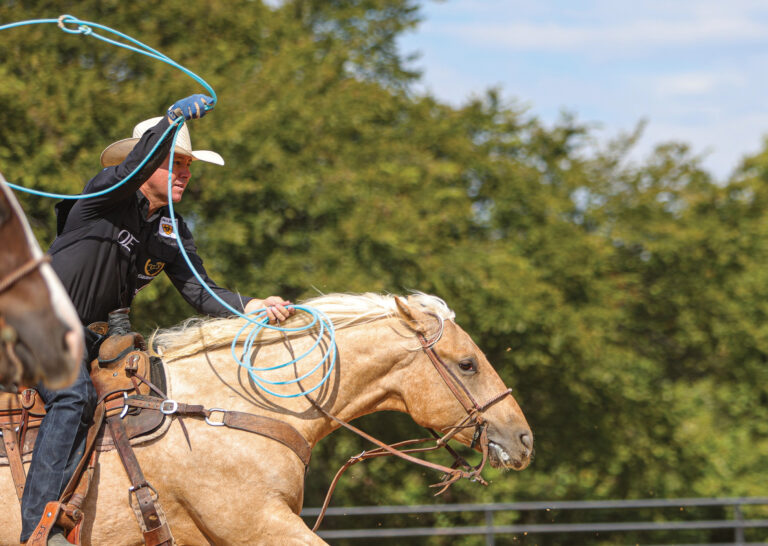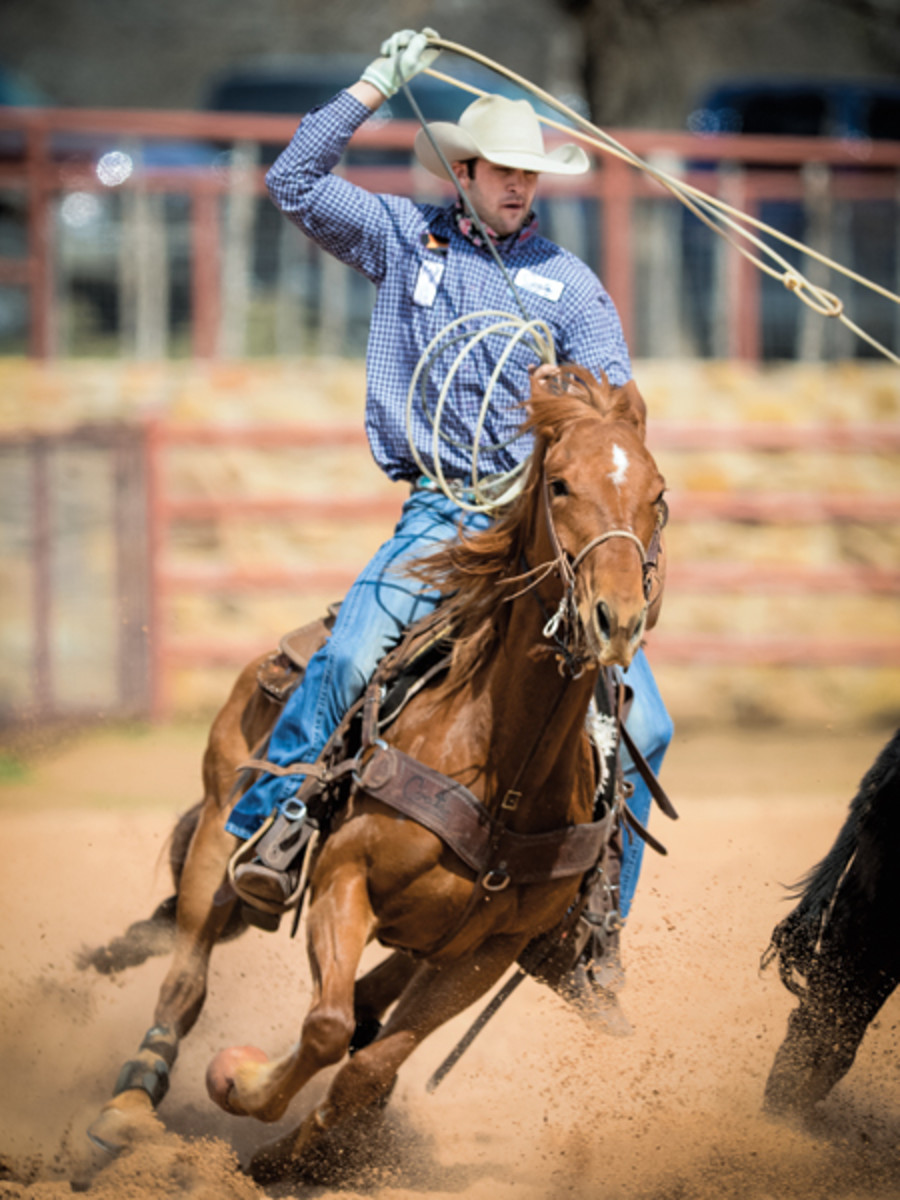
1. We’re coming into the corner. The corner is a real big part of heeling at the rodeos or the jackpots. Anywhere you rope, if you set your corner up and have a real smooth entry into the corner, that’s where the whole run begins. I try to set that entry up because it sets the whole run up.
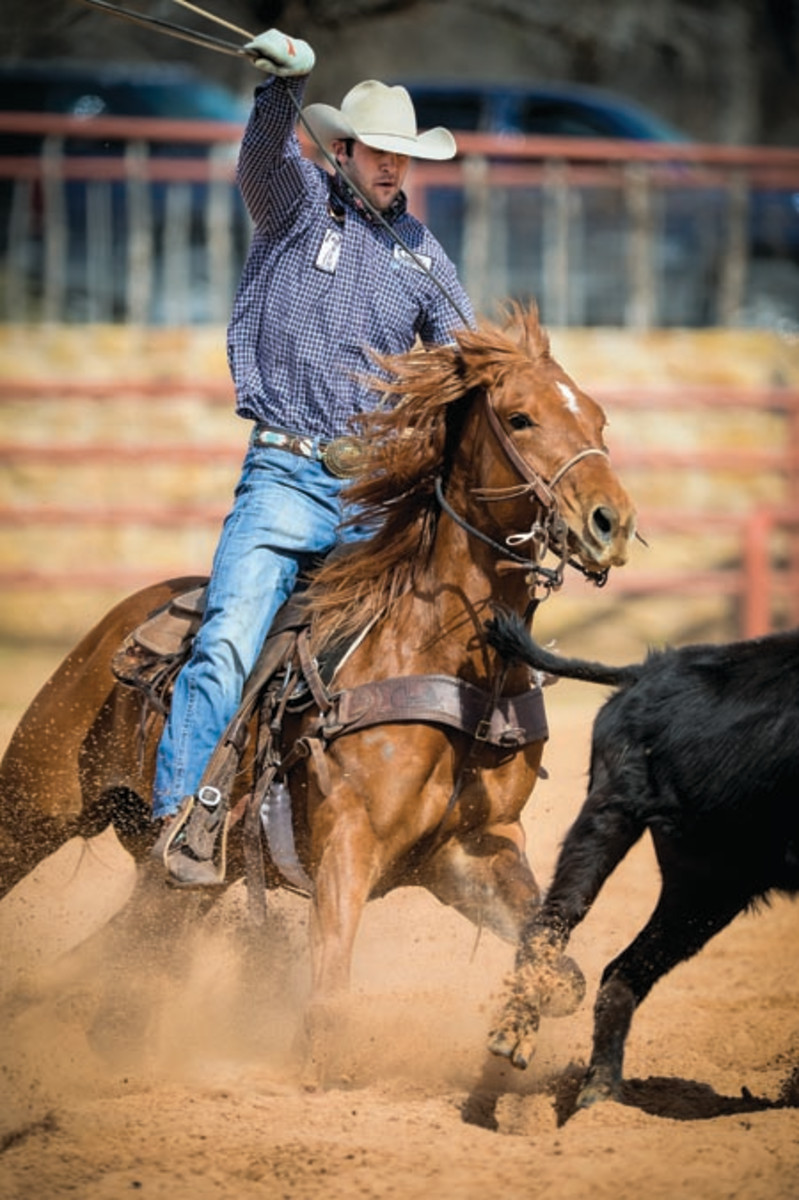
2. The steer is turning and he’s fixing to make his first complete hop away and I’ve got my rope across his back. I’m right where I want to be, just barely to the inside, but not too far and not stepping past the steer, either. I’m close to the steer, but there’s some room so whatever I need to do, I can adjust depending on if my header slows down or speeds up. The best part from this picture is my horse being collected. I can react to whatever that steer’s next move is and go with him because of that.
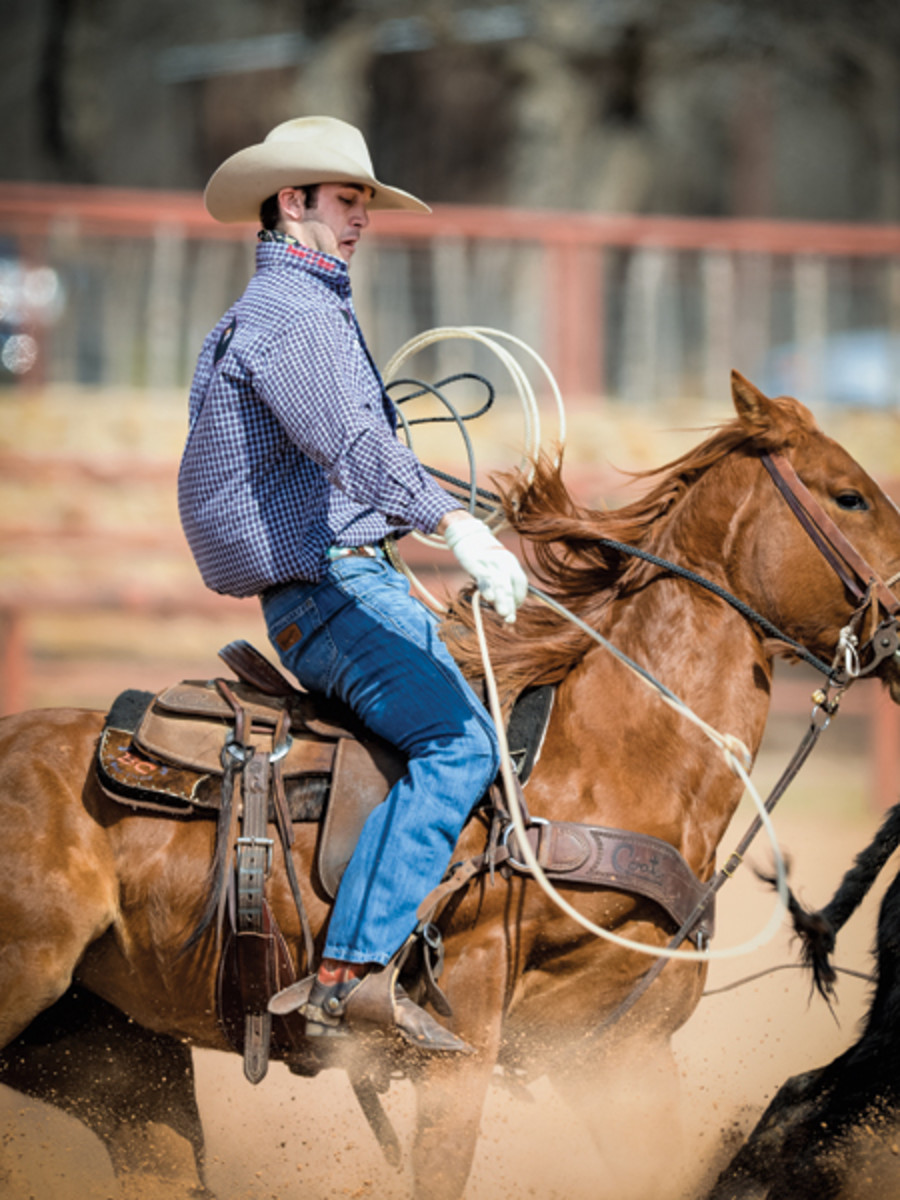
3. The steer is leaving me and I’m starting to deliver my loop. My horse is collected, so I’m expecting a good stop. This all began in the corner. If you set your corner up so your run will end like this, it gives you a smooth delivery and the whole run goes smoother.
4. Steers that are real fresh and wild, you want closer to you as you’re delivering your rope so that you have plenty of time to dally and things can come together good. If you stay tighter, you can go with them no matter what they do. Older steers that hang on the end of the rope and you’ve seen go a lot so you know what they’re going to do, it’s easier to keep them out in front of you because you know they’re not going to leave you.
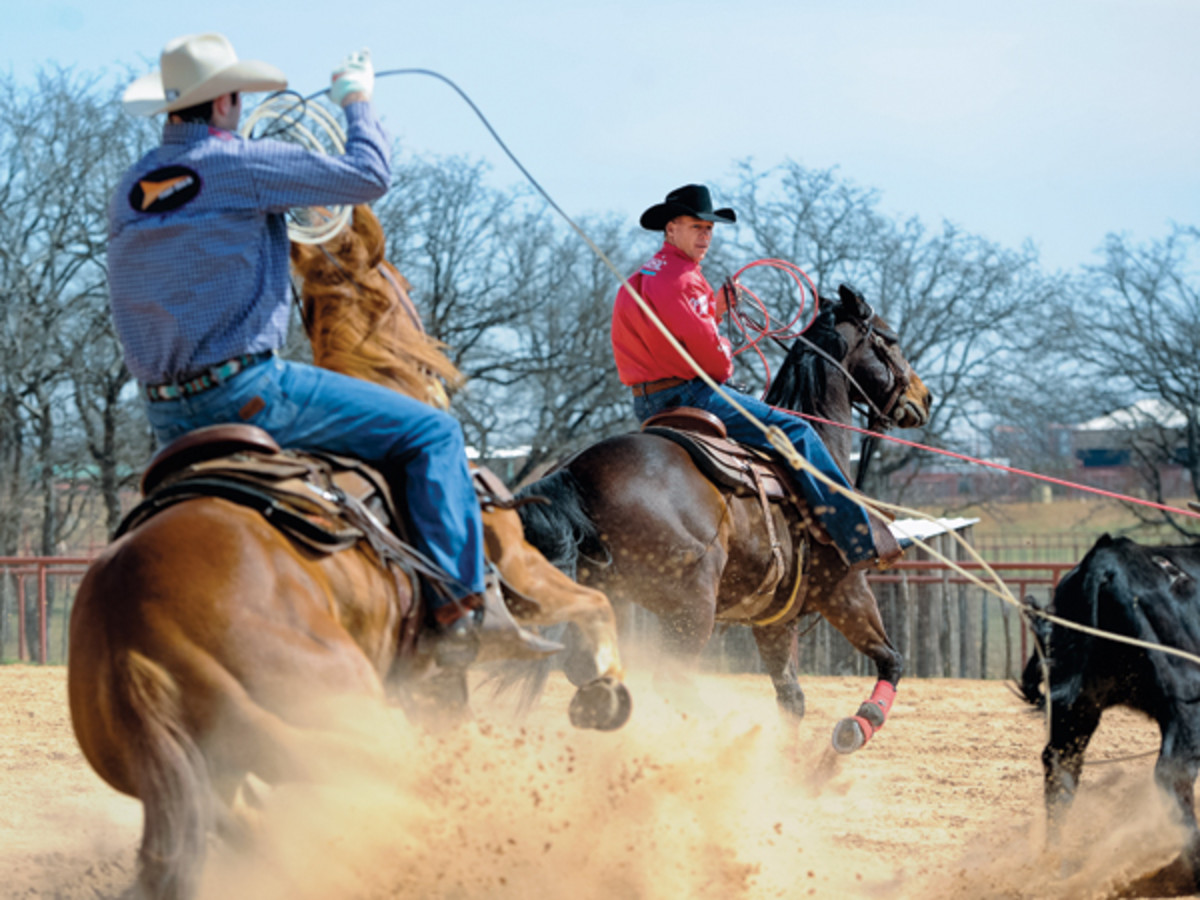
Here, I’ve got the steer roped, my horse is stopping good and there’s plenty of room for me to dally. I’m not panicked and the steer is not a long ways away from me. My partner has turned him and is looking back for me to dally to finish the run. This is how the clock stops now: how hard your horse stops and stays square and how fast the head horse faces. In our game, that’s a really big part. If you set it up to be smooth, you can stop faster and help finish the run.
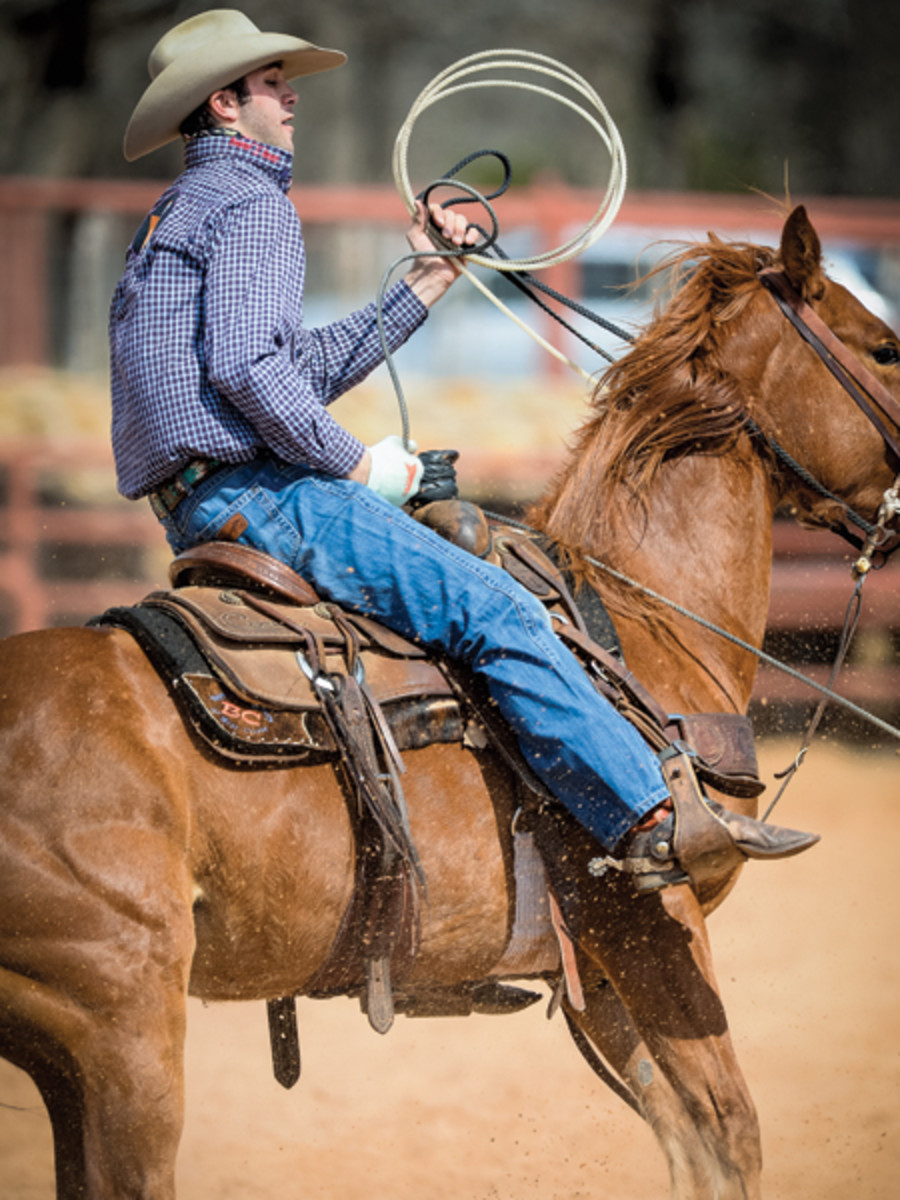
5. Here’s another angle of the end of the run. It all ends when you dally and I have plenty of time and plenty of rope to dally with. The rope is coming tight right here nice and fast like we want it. My horse is square and straight and ready to take the jerk, so it’ll just end the run nice and smooth. Wherever you move your left hand is where your horse is going to go. If you have your hand dead square on his neck, it will help your horse stay square and take the jerk. Once I see the steer’s feet are in the loop, I try to sit back, and that helps my horse get and stay on his butt more.
Top Team Ropers Brad Lund and Dakota Kirchenschlager Join Roping.com in New Training Video Series









